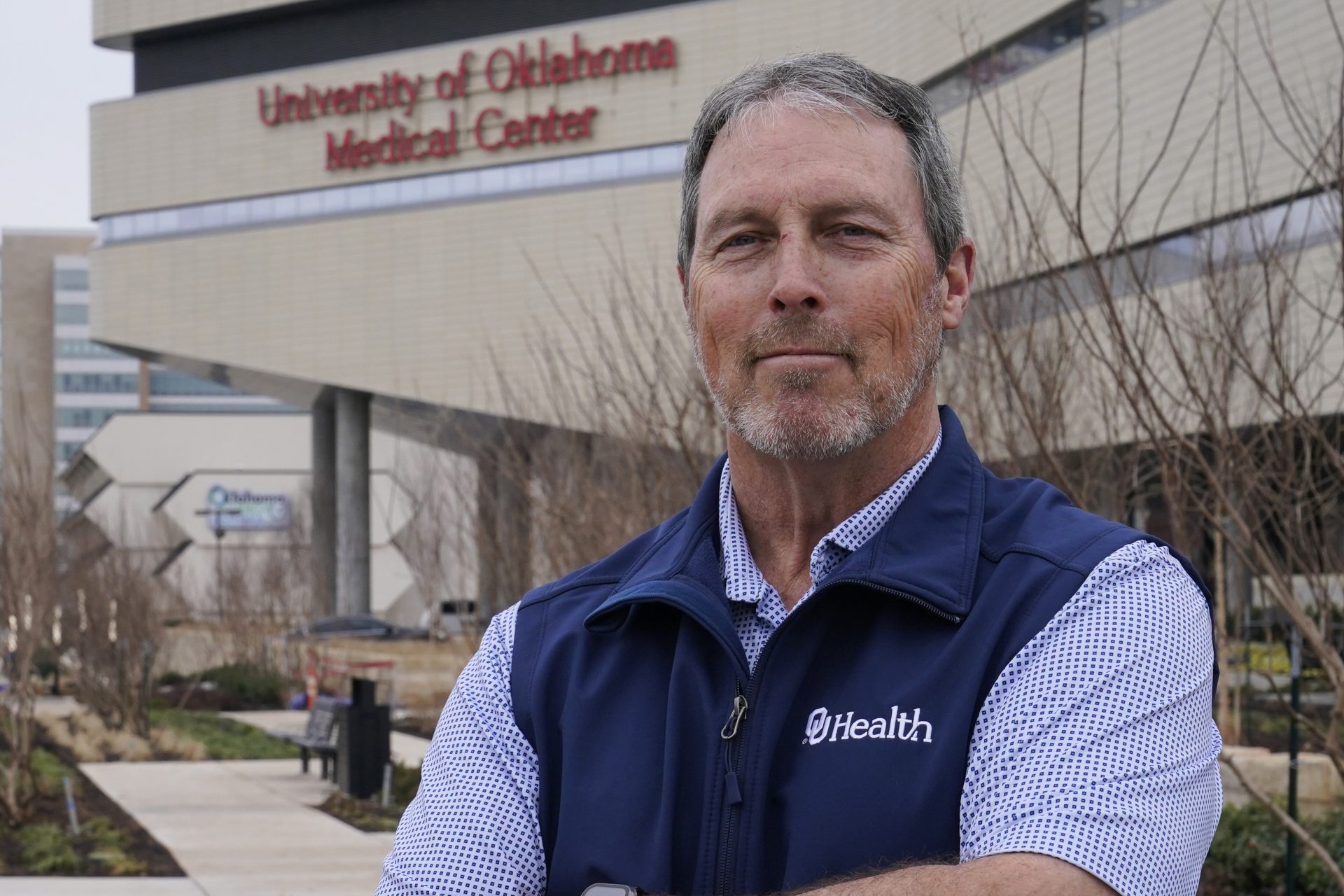
Dr. Cameron Mantor, Chief Medical Officer at OU Medicine, poses for a photo outside the hospital complex Thursday, Jan. 21, 2021, in Oklahoma City. (AP Photo/Sue Ogrocki)


Dr. Cameron Mantor, Chief Medical Officer at OU Medicine, poses for a photo outside the hospital complex Thursday, Jan. 21, 2021, in Oklahoma City. (AP Photo/Sue Ogrocki)
As the school year draws nearer, COVID-19 is not the only disease putting pressure on Oklahoma’s children’s hospitals. Across the state, kids are being admitted amid an unseasonable surge in respiratory syncytial virus, or RSV.
Across the United States, more than 70-thousand children were diagnosed with the coronavirus last week. So far, hospitalizations among children have remained low — less than 2% of all COVID-19 hospitalizations in the 23 states surveyed by the American Academy of Pediatrics. Oklahoma has seen a few dozen pediatric hospitalizations in recent weeks — a small fraction, given that on average, more than 800 Oklahomans are hospitalized daily.
Some local medical officials are concerned that could change with the start of the school year. And if it does, the timing is terrible. Oklahoma’s children’s hospitals are already seeing a surge in demand because of another respiratory virus.
Dr. Steven Nye, the pediatrics department chair at Integris said RSV infects people of all ages, it’s worse in children. It has many symptoms, but they combine to restrict airways. Smaller airways in children mean the issue can become severe much more quickly.
“Sometimes there’s kids who progress to full respiratory failure and need a ventilator, you know, sometimes a couple of days, sometimes up to a week or more,” Nye said.
Like the flu, RSV is supposed to be worse in the winter. That hasn’t been the case this year.
“Typically summer is a slow time for pediatric illnesses,” Nye said. “This summer has been abnormally busy. We’ve often been, you know, up to capacity and sometimes having to turn patients away because we are beyond capacity… To have it in the summer is unusual. To have it so severe and so prevalent during the summer is unheard of. I don’t think it’s ever happened before.”
Hospital administrators across the state, including in the Oklahoma City and Tulsa metro areas, say RSV is filling children’s hospitals. There’s not a definitive answer yet as to why the unseasonable surge is happening, but Nye has a theory.
“Kids and babies who really, if they were born during COVID, haven’t been exposed to any viral illnesses throughout their entire life,” he said. “And now suddenly they’re thrown into you know, it’s like when a kid first starts daycare, they’re sick every other week.”
So kids are already sick and filling up the ER, and the new semester hasn’t started yet. Once it does, children will likely be entering schools with no mask requirements. Senate Bill 658, which passed during the last week of the legislative session, prohibited vaccine requirements and mask mandates in all educational institutions unless the governor declares a state of emergency. Gov. Kevin Stitt has announced several times that his office does not intend to declare a state of emergency.
Additionally, federal regulators have signed off on vaccinating children over 12, but younger kids can’t get the shot.
“If we’re struggling with bed space because of RSV and then we start seeing a lot of teenagers and kids with more severe COVID symptoms, it’s going to be difficult to take care of all these people,” Nye said.
This isn’t the case for all hospitals, but Dr. Cameron Mantor, the Chief Medical Officer for OU Children’s, says summer is a busy time for that facility.
“A lot of parents want to do elective type surgeries and things and get done during the summertime to try to not have them in school,” he said. “And so it’s common for us to be busy because of that. Summer is also trauma season for us because kids are out playing and they get in accidents and things. But RSV has compounded that.”
OU Children’s is facing another capacity issue that all hospitals are now.
“I think every hospital in the metro is suffering from from not having enough nurses,” he said. “The last 12-to-18 months has been incredibly hard on on everyone, including nurses. And and we simply don’t have as many nurses as we used to.”
All of these medical experts, as well as state and local health officials, say the best way to hedge against a further surge in hospital bed demand is to get the overall COVID-19 vaccination rate up As of this week, Oklahoma remains in the bottom ten for overall vaccination, with about 60% of the state unvaccinated.